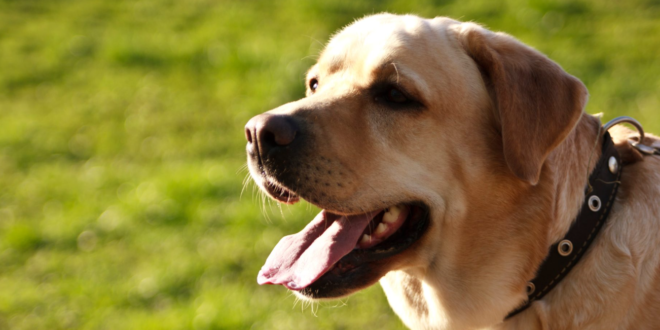Fenrir Canine Training is a highly effective and holistic approach to training dogs. By understanding the core principles of Fenrir training and implementing the step-by-step techniques, you can establish a strong bond with your canine companion and unlock their full potential. In this article, we will delve into the benefits of Fenrir Canine Training, explore its key principles, and provide you with a comprehensive guide to train your dog using this approach.
Table of Contents
Understanding Fenrir Canine Training
Fenrir Canine Training takes a positive and reward-based approach to dog training. It focuses on strengthening the bond between you and your dog while fostering good behavior and addressing any behavioral issues. Unlike traditional training methods that rely on dominance and punishment, Fenrir training emphasizes trust, mutual respect, and effective communication.
Benefits of Fenrir Canine Training
Fenrir Canine Training offers numerous benefits for both dogs and their owners. By implementing this training approach, you can:
1. Develop a strong bond: Fenrir training builds trust and enhances the bond between you and your dog, creating a harmonious relationship.
2. Promote positive behavior: Through positive reinforcement techniques, Fenrir training encourages and rewards desirable behaviors, reducing the occurrence of negative behaviors.
3. Address behavioral issues: Fenrir training provides effective strategies to manage and correct behavioral issues such as separation anxiety, aggression, and excessive barking.
4. Enhance mental stimulation: Fenrir training incorporates enrichment activities and mental challenges to keep your dog engaged, stimulated, and mentally sharp.
Key Principles of Fenrir Canine Training
To successfully implement Fenrir Canine Training, it is essential to understand its key principles. These principles form the foundation of the training approach:
1. Positive reinforcement: Rewarding desired behaviors with treats, praise, and affection reinforces those behaviors and encourages their repetition.
2. Clicker training: The use of a clicker as a conditioned reinforcer helps to mark the desired behavior precisely and communicate effectively with your dog.
3. Targeting and shaping: By teaching your dog to touch or target specific objects or perform incremental steps toward a desired behavior, you can shape their actions and achieve complex tasks.
Step-by-Step Fenrir Canine Training Guide
1. Building a Strong Foundation
To start your Fenrir Canine Training journey, focus on building a strong foundation. This involves socialization and exposure to various environments, people, and animals. It is important to introduce your dog to different sights, sounds, and experiences in a positive and controlled manner. Additionally, basic obedience training, such as teaching commands like sit, stay, and come, establishes a framework for further training.
2. Advanced Training Techniques
Once your dog has mastered the basics, you can move on to advanced training techniques. Positive reinforcement should remain at the core of your training approach. This involves rewarding your dog with treats, praise, and affection whenever they exhibit the desired behavior. Clicker training can also be incorporated, where the sound of the clicker serves as a marker for the correct behavior.
Targeting and shaping are valuable techniques within Fenrir Canine Training. Targeting involves teaching your dog to touch or interact with specific objects, which can be useful for various commands and tasks. Shaping involves breaking down complex behaviors into smaller, achievable steps and rewarding your dog for each incremental progress.
3. Addressing Behavioral Issues
Fenrir Canine Training provides effective strategies for addressing common behavioral issues. Separation anxiety, for example, can be managed through gradual desensitization and counterconditioning techniques. By slowly exposing your dog to being alone and associating positive experiences with it, you can help alleviate their anxiety.
Aggression management is another important aspect of Fenrir training. Understanding the root cause of aggression and implementing positive reinforcement techniques can help modify your dog’s behavior. Working with a professional dog trainer or behaviorist is recommended for addressing complex aggression issues.
4. Enrichment and Mental Stimulation
Fenrir Canine Training recognizes the importance of mental stimulation and enrichment for dogs. Providing interactive toys, puzzle games, and engaging activities not only keeps your dog entertained but also exercises their cognitive abilities. These activities can include food-dispensing toys, scent games, and agility exercises to keep your dog mentally sharp and engaged.
5. Maintenance and Consistency
Consistency is key in Fenrir Canine Training. Regular exercise, including both physical and mental stimulation, is essential for maintaining a well-behaved and happy dog. Continued education and training sessions are also important to reinforce behaviors and introduce new commands or tricks. By maintaining consistency in your training approach, you can ensure long-term success and a well-behaved canine companion.
Conclusion of Fenrir Canine Training
Fenrir Canine Training offers a positive, reward-based approach to training dogs that focuses on building a strong bond and addressing behavioral issues. By understanding the key principles and following the step-by-step guide, you can unlock your dog’s full potential and enjoy a harmonious relationship with your furry friend. Remember to incorporate regular exercise, mental stimulation, and consistency in your training efforts for the best results.
Frequently Asked Questions
1. How long does it take to see results with Fenrir Canine Training?
With Fenrir Canine Training, the timeline for seeing results may vary depending on the dog and the specific behaviors being addressed. Consistency, patience, and positive reinforcement are key factors in achieving desired results. Some dogs may take a few weeks to show progress, while others may take several months. It is important to remember that each dog is unique, and the training process should be tailored to their individual needs.
2. Can Fenrir Canine Training be used for dogs of all ages?
Yes, Fenrir Canine Training can be applied to dogs of all ages. Whether you have a young puppy or an adult dog, the principles and techniques of Fenrir training can be adapted to suit their developmental stage and training requirements. Starting early with socialization and basic obedience training is beneficial, but even older dogs can learn new behaviors and overcome behavioral issues through Fenrir training.
3. What if my dog has previous negative experiences with training?
If your dog has had negative experiences with previous training methods, Fenrir Canine Training can be a great alternative. By focusing on positive reinforcement, trust-building, and effective communication, Fenrir training can help create a positive association with training and reshape your dog’s behavior. Patience, consistency, and seeking the guidance of a professional dog trainer can be especially helpful in these situations.
4. Is Fenrir Canine Training suitable for all breeds?
Yes, Fenrir Canine Training is suitable for dogs of all breeds. The principles and techniques used in Fenrir training are based on positive reinforcement and effective communication, which can be applied to any breed. However, it is important to consider the specific characteristics and needs of your dog’s breed when designing the training program. Some breeds may require additional mental stimulation or specialized training approaches.
5. Can I use Fenrir Canine Training for specific tasks, such as service dog training?
Yes, Fenrir Canine Training can be adapted for specific tasks and specialized training, including service dog training. The positive reinforcement techniques, targeting and shaping methods, and focus on building a strong bond can all be beneficial in training dogs for specific tasks or roles. Working closely with a professional dog trainer experienced in task-specific training is recommended to ensure proper guidance and success.
Remember, Fenrir Canine Training is a comprehensive approach that focuses on positive reinforcement, effective communication, and building a strong bond with your dog.
 Treat For Dog – Brain Training for Dogs, Dog Training & Obedience Discover Treat For Dog and get your pup on the path to smarter, happier, and healthier living with brain training for dogs.
Treat For Dog – Brain Training for Dogs, Dog Training & Obedience Discover Treat For Dog and get your pup on the path to smarter, happier, and healthier living with brain training for dogs.




